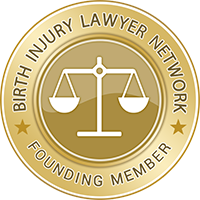Nuchal Cord Leading to Umbilical Cord Strangulation
Umbilical cord strangulation is a result of the wrapping of the umbilical cord around the baby's neck which may make for a difficult delivery. This situation is often seen among babies in abnormal presentation such as breech or feet first or shoulder first.
The umbilical cord connects the developing fetus to the placenta. It is the one that carries the nutrient-rich and oxygenated blood back and forth from the baby to the placenta. It will start to form at five weeks after conception and will grow longer until the 28th week of pregnancy. Its average length is 22 to 24 inches. Under normal conditions, an umbilical cord will have two arteries and one vein. The vein supplies the developing baby with nutrients and oxygen while the two arteries removes the baby's waste products and transfers it to the mother where it will be disposed of.
A problem with the growth of the umbilical cord is one of the many complications that may happen during pregnancy and can cause problems during delivery. Aside from the abnormalities in the development of the umbilical cord, it can also pose as a potential risk for strangulation of the baby during birth especially when it becomes entangled or wraps around the baby's neck. When the umbilical cord loops around the neck of the baby maybe once or more, the condition is called nuchal cord.
A nuchal cord occurrence is common and most get resolve before delivery unless the medical practitioner is slow in recognizing the condition which may lead to more serious complications such as lack of oxygen which can result to brain damage or death. Although the condition is rarely associated with any serious neonatal problems, an infant with a tight nuchal cord is more likely to have anemia because the blood flow from placenta to fetus is prevented by the tightly wrapped cord.
The nuchal cord has two classifications--Type A wherein the umbilical cord is wrapped around the baby's neck in 360 degrees; and Type B wherein the umbilical cord is still coiled around the baby's neck but it has a hitch which cannot be undone and ends up as a true knot. A knot is common especially among too long umbilical cords such as those in identical twin pregnancies.
The utmost goal in managing a nuchal cord should be to prevent umbilical cord strangulation and compression during delivery. Preserving an intact nuchal cord will depend on how tightly it is wrapped around the baby's neck. A loose nuchal cord can just be easily slipped over the baby's head. If this is not possible because it is wrapped too tightly, there is a technique wherein the medical practitioner may be able to slip it over the infant's shoulders, but if this is also not possible, the medical practitioner may use the somersault technique.
The incidence of umbilical cord strangulation will be greatly reduced by the presence of a very competent medical practitioner or one who is experienced with this condition. Constant monitoring of the pregnant mother will be of big help too. The ultrasound may detect problems with the umbilical cord, so the medical practitioner may be able to anticipate possible problems during delivery.
Find an Experienced Birth Injury Attorney in your Local Community
 Find A Lawyer in Columbus, OH
Find A Lawyer in Ohio
Find A Lawyer in Any State
Find A Lawyer in Columbus, OH
Find A Lawyer in Ohio
Find A Lawyer in Any State
